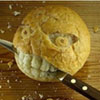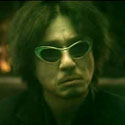|
Are there any good resources for finding esoteric sheet music? I'd dearly like to perform Hard-Hearted Hannah in my voice class, but the only sheet music I've found is on pay sites and I've got a policy about not paying people for public domain.
|
|
|
|

|
| # ? May 11, 2024 19:49 |
|
NOT PAUL LAYTON posted:Are there any good resources for finding esoteric sheet music? I'd dearly like to perform Hard-Hearted Hannah in my voice class, but the only sheet music I've found is on pay sites and I've got a policy about not paying people for public domain. I'm pretty sure that song isn't public domain; it's in the ASCAP database and the songwriter didn't die until 1979.
|
|
|
|
h_double posted:I'm pretty sure that song isn't public domain; it's in the ASCAP database and the songwriter didn't die until 1979. I wasn't even considering that a possibility, honestly--1979, really? That would certainly explain the difficulty.
|
|
|
|
Sharks Eat Bear posted:Recently I've been playing my dad's US Vintage Series Strat, and I decided to restring it. After restringing my friend noticed that the bridge looked like it was raised a little bit more than usual off of the body. I honestly didn't know if it was or not, but I decided to check out the tremolo spring tension in the back anyway. One of the manuals I downloaded off of Fender's site said that the tremolo block should be 3/16" away from the body wall, so I measured and that's how far it was. I'm thinking that maybe the bridge has always been raised as much as it is now, but it just struck my friend as odd because he'd never really noticed until new strings were put on.
|
|
|
|
Question: I have a Boss Dr-3 drum machine that I've programmed awesome beats into for the RPM 2010 challenge. I also have Audacity on my computer with which to record them. I am not going to take the time to look through all the threads to find someone with the same question, I need to record them as soon as possible so that I can put in movie sound bytes (which I know how to do). What do I need to get the drum machine to register sound directly onto the program, instead of recording live with my laptop's lovely microphone? I'm thinking all I would have to get is a MIDI to USB adapter, and then I can plug it in. Would I be correct in believing this? Thanks for telling me yes or no. CaptainKirkCameron fucked around with this message at 22:53 on Feb 17, 2010 |
|
|
|
BabyJaneHudson posted:Question: No, all you need to do is run the drum machine's line out into your sound card's line in. It looks like the DR-3 has phono style line outs, you should be able to go to Radio Shack and get a $5-10 cable that's 3.5mm stereo male at one end and splits into two male phono connectors at the other end. You don't need to mess with MIDI unless you are trying to get the drum machine to sync up to a sequencer on the PC or something. EDIT: you just need one of these http://www.radioshack.com/product/index.jsp?productId=3452165 h_double fucked around with this message at 23:27 on Feb 17, 2010 |
|
|
|
Thanks, h_double! Going to Radio Shack starting... now! Edit: I actually chatted it up with this girl who works in the recording studios at my college, and she's going to help me with the equipment and software. That way I won't have to use my lovely netbook for this stuff. Score! Thanks for the advice anyways, though, it worked. CaptainKirkCameron fucked around with this message at 17:34 on Feb 20, 2010 |
|
|
|
Saving for a sax, but in the mean time I want to get my music juices flowing, and lately I've been really getting into harmonicas, they seem pretty god drat blues all around and so I'm wondering, as someone who is beginning with that instrument, should I go with B or C? B seems to be the all around blues harp but some people have said they've had to start with C then take it to B...
|
|
|
|
Green Puddin posted:Saving for a sax, but in the mean time I want to get my music juices flowing, and lately I've been really getting into harmonicas, they seem pretty god drat blues all around and so I'm wondering, as someone who is beginning with that instrument, should I go with B or C? B seems to be the all around blues harp but some people have said they've had to start with C then take it to B... All harmonicas play the same, they're just tuned to different keys (unless it's one of those chromatic ones).
|
|
|
|
Some harmonica keys are definitely easier to play bends on. Also remember that if you are playing anything bluesy (or minor key in general), you will be playing crossharp, which means the key of the harmonica is actually based on drawing in the second hole (which is a fifth interval relative to the harmonica's main key). In other words, if you want to play a blues in B, you want a E harmonica. If you want to play a blues in Bb, you want a Eb harp. If you want to play a blues in C, you want a F harp. etc. (http://www.fetherbay.com/HarpTutorial.html has a complete chart) I've only played in a few keys myself, but a C harp is definitely an okay place to start.
|
|
|
|
OK, I'm not really sure if this is the best place for this question, but here goes... The more and more I read about and play music the more I realize how important the mix is in determining whether or not a band sounds good. However, I have very little understanding of "what" the mix really is, or how to properly mix. I mean, I understand that you don't want every instrument in the same frequency range because then you'll get a muddy sound with no clarity between instruments. So, for example, my band consists of a guitarist, bassist, drummer, keyboardist and singer. When we set up our mix for a live show, does that basically consist of changing the EQs of our respective amps so that there's little overlap between which frequencies are being boosted/cut? Is the same process/theory used when recording, or is that mixing in a different sense? I feel like this is something fundamental to getting a good sound that I just know embarrassingly little about.
|
|
|
|
So I just bought new strings for my violin, and after a week I break the D string. I can't find a place in town that sells individual strings, and D'Addario's website doesn't ship to Canada. Is there some sort of online retailer that would sell me Helicore's that does ship to Canada?
|
|
|
|
HappyHippo posted:So I just bought new strings for my violin, and after a week I break the D string. I can't find a place in town that sells individual strings, and D'Addario's website doesn't ship to Canada. Is there some sort of online retailer that would sell me Helicore's that does ship to Canada? JustStrings will ship internationally for $6.95 according to this info section on their site.  JustStrings.com posted:First Class Mail - US$6.95 For Any Size Order. (Packages over 13oz. Ship via Priority Mail) Tracking and Delivery Confirmation Service is included for all destinations in the USA. A Signature is Not required. United States Postal Service Delivery to USA (includes APO, FPO) and Canadian destinations only. Gorilla Salsa fucked around with this message at 21:43 on Feb 26, 2010 |
|
|
|
I'm trying to sample from some mp3s in Ableton Live. What's the best way to do this?
|
|
|
|
AriTheDog posted:I'm trying to sample from some mp3s in Ableton Live. What's the best way to do this? You can drag an mp3 into an empty clip slot of an audio track, then warp/loop/crop/etc. from there. If you want to sample something really short (like a drum hit or something) you might want to crop it first (either in Live or another wave editor like Audacity), then drag & drop the cropped sample into Simpler/Sampler/a drum rack/etc.
|
|
|
|
Why and how do saw- and pulse-waves create(?) overtones/harmonics and a sine wave doesn't?
|
|
|
|
FLX posted:Why and how do saw- and pulse-waves create(?) overtones/harmonics and a sine wave doesn't? A sine wave is a pure tone- just the way energy travels, I believe. Anything on top of that is harmonic or inharmonic content. Saw waves etc. don't "create" overtones, they just have them.
|
|
|
|
The sine wave is the most basic waveform. I'm not sure what the fundamental reason is that the math shakes out that way. Any (audio) waveform can be broken down into a combination of sines. For example, a saw wave can be broken down into sine waves that are multiples of the fundamental frequency and decrease in amplitude as they go up. A square is the same thing except only odd multiples of the fundamental. Triangles are also only odd but with a steeper falloff. In other words, the harmonics or overtones "are" sine waves. This youtube video illustrates it with square, saw, and triangle but without audio. This one has audio but only shows a square, and what he calls a "Perfect" square at the end is not quite right (and is also very loud, watch out), but it's good up till then. Edited for some clarity and better examples now that I'm not bashing it out while at work. breaks fucked around with this message at 05:35 on Feb 27, 2010 |
|
|
|
Thanks! So basically you add a lot of sine waves together to create saw-, square- and whaterver-waves, and because the sine waves differ in amplitude and frequency, they are the overtones?
|
|
|
|
FLX posted:Thanks! So basically you add a lot of sine waves together to create saw-, square- and whaterver-waves, and because the sine waves differ in amplitude and frequency, they are the overtones? Yep, exactly. This is how additive synthesis works. 
|
|
|
|
OK, another stupid question. I've clearly hosed something in Cubase because now it won't play anything. I hit play and the scroller scrolls over the audio etc but I get no sound. The levels aren't moving, either. It's less like Cubase isn't playing audio and more like it won't read it. What gives?
Popcorn fucked around with this message at 16:04 on Feb 27, 2010 |
|
|
|
http://www.soundonsound.com/sos/may99/articles/synthsec.htm has a good basic overview of sine waves and harmonics (the whole series of Synth Secrets articles is awesome). Basically if you imagine plucking a string, the string will vibrate in a sine wave shape, this is the string's fundamental frequency (first order harmonic). (This is also, of course, a theoretical mathemetical string, since real world objects are much more complex and pure waveforms don't really exist outside of synthesizers -- though the oscillations of rippling waves in water, light waves, etc. can all be described as approximately sine wave shaped). If you place your finger halfway along the string and pluck half of the divided string, that half-length string will vibrate at twice the frequency, this is the second order harmonic (which, as you may know, doubling frequency = a tone one octave higher in pitch). If you subdivide the string into thirds, each third vibrates a 3x the frequency of the whole string -- the third order harmonic, an octave and a fifth interval above the fundamental). And so on. (and again, in the real world, the "piece of string" is the running pressure waves that transmit sound). If (like breaks said above) you take a sine wave and gradually add the integer order harmonics (e.g. mix in sine waves 2x, 3x, 4x... the fundamental frequency) with decreasing amplitude, you gradually get closer and closer to a sawtooth wave.  If you take a sine wave and add in only the odd-integer harmonics (fundamental + 3x + 5x...) you end up with a square wave  The math behind all of this -- building sounds out of sinewaves, and deconstructing complex sounds into their constituent harmonics -- is called fourier analysis, and it's the basis for everything from audio spectrum analyzers to pitch warping / autotune / melodyne / etc. If you want to get all experimental and dr. science about all this, you can grab an oscilloscope plugin (here is a free one for Windows) and hook it up to your favorite additive/subtractive synth. h_double fucked around with this message at 18:24 on Feb 27, 2010 |
|
|
|
Thanks so much! I installed the oscilloscope and played around with Synth1 and now I think I really get the whole "adding several waveforms together" thing. This is so interesting, even though I'm even less a science person than I am a musician 
|
|
|
|
What is the advantage of using a physical mixer over virtual ones? Also, I need someone to fix my Cubase problem before I DIE OF FRUSTRATION
|
|
|
|
Popcorn posted:What is the advantage of using a physical mixer over virtual ones? Is your audio working outside of Cubase? Switch up on the ASIO driver in the Device Audio>VST Audio Setting, maybe.
|
|
|
|
No. 9 posted:Is your audio working outside of Cubase? Switch up on the ASIO driver in the Device Audio>VST Audio Setting, maybe. Something weird happened whereby I unplugged a USB cable somewhere and it reset my PC's audio drivers. When I plugged my external soundcard back in, my PC ended up sending all my audio out through it by default (instead of using the internal soundcard). Until this happened, I had been listening to audio through my internal speakers except for my Cubase stuff, which was going to my external soundcard. Now everything's going through my external soundcard, which is fine by me as it means I don't have to keep moving my speaker cables around. BUT-- the side-effect seems to be that Cubase won't send audio to my external soundcard anymore, even though it's set to in my Cubase options. Weirdly, if I set it to a different soundcard, the levels fall and rise, but if I switch it back to my external one the levels are silent. It's the silent levels that confuse me, because it suggests Cubase isn't even reading the audio, let alone sending it.
|
|
|
|
Oh, as a further bit of loving weirdness, if I swap the drivers around a bit in Cubase, afterwards my entire PC's audio is fuzzy and distorted until I close the program. Like right now. What the hell is going on? edit: OK, phew, fixed it. Turned out my soundcard's drivers had bizarrely uninstalled themselves. How the hell did that happen? Oh well, done now. Popcorn fucked around with this message at 01:59 on Feb 28, 2010 |
|
|
|
I've got a MIDI problem that I thought would best be answered in this thread. Using an FCB1010 foot controller, I set some controls in Guitar Rig to respond to MIDI CC signals. When I set a control like stompbox on/off, or Play/Stop/Record on the tape deck in Guitar Rig, the footswitch works once but then stops until I restart the program. For instance, when setting it as a toggle for a stompbox, I can either turn it on or off, but thats all; the toggle doesn't function after that. I can only stop or record on the tape deck once, then it no longer recognizes the signal sent. However, if I select "Learn" in the program, Guitar Rig recognizes the signal coming from the MIDI controller. This all seems like a Guitar Rig problem, but I'm wondering if there is some MIDI weirdness that I'm not aware of causing this.
|
|
|
|
Hi, I have a little recording situation that I'd appreciate some help with. All I want to do is record my bass to PC. Sound quality is not a huge issue -- this would just be for messing around and trading stupid recordings with friends, so I don't have a mixer or anything. I'm trying to spend little money on this. I have a U-Control interface which I'd like to use, however it only has L/R inputs and they're 3.5mm size. So I'm going to need a 1/4" female to 3.5mm male adapter. However, the options there are kind of weird. It's alright if I can only use either the left or right input individually and then just "mirror" the channel to make it stereo in Audacity, but if it's possible to use both inputs at once, then... Do I get a stereo 1/4"-to-dual RCA? Wouldn't a mono 1/4 to dual RCA produce the same effect?
|
|
|
|
Achtane posted:Hi, I have a little recording situation that I'd appreciate some help with. Based on that photo + description, those are RCA phono plugs (like A/V connectors on a TV), not 3.5mm plugs (like walkman headphones). Unless I'm mistaken, what you need is a 1/4" female to RCA male adapter. Plug your bass into the adapter, then plug the adapter into the interface. There should be someplace in Audacity to tell it to record off of either just the left or right channel, if not you can always bounce the one side to a mono track. You probably will not get a very strong signal level recording this way without any kind of preamp, but it should be okay to experiment with at least.
|
|
|
|
I have a recording I want to add midi stuff to, but the tempo of the recording drifts, so the midi goes out of time. I don't want to change the timing of the original recording (not that I'd know how to do that anyway). How do I adjust midi for drifting tempos in Cubase 5? Is there a good guide out there someone can recommend?
|
|
|
|
I know you don't want to hear this but I think the "right" answer is to re-record the audio played better so that it stays in the same tempo. If you really don't want to, you can automate tempo changes in basically any daw I think. I haven't used cubase so I can't tell you how to do it there. But that's kind of meant for a coordinated speedup or slowdown. If the recorded audio "drifts" gradually due to bad playing it's going to be almost impossible to line anything up with it because you're going to be automating a new tempo every beat.
|
|
|
|
Col.Kiwi posted:I know you don't want to hear this but I think the "right" answer is to re-record the audio played better so that it stays in the same tempo. If you really don't want to, you can automate tempo changes in basically any daw I think. I haven't used cubase so I can't tell you how to do it there. But that's kind of meant for a coordinated speedup or slowdown. If the recorded audio "drifts" gradually due to bad playing it's going to be almost impossible to line anything up with it because you're going to be automating a new tempo every beat. OK, if that's the case it's s good to know. Unfortunately I can't re-record it as the audio I'm using is a bit of a one-off. Thanks for the diagnosis.
|
|
|
|
Popcorn posted:I have a recording I want to add midi stuff to, but the tempo of the recording drifts, so the midi goes out of time. I don't want to change the timing of the original recording (not that I'd know how to do that anyway). How do I adjust midi for drifting tempos in Cubase 5? Is there a good guide out there someone can recommend? I had a recording with drums split into separate tracks that drifted in tempo just like your recording. I wanted to replace the kick drum, so on its track I used quantize with 0% threshold to convert every transient (what Live detects as a beat) into a warp marker. I then scrubbed through it and fixed any false positives and slightly off markers. After that, I did a right click on clip -> slice to MIDI track, with "Create one slice per" set to "Warp Marker". In my case I had to divide the kick drum track up into segments and do this to them all separately, because doing it all at once would've created more than the maximum number of slices (128). The MIDI clip it created looked more or less like this:  This gave me the timing. After that it was a matter of moving all the notes down to the same line, and then copying the MIDI clip over to my ezDrummer track and making sure the line of notes was on the line for ezDrummer's kick trigger. In your case you could take the MIDI clip and move it over to a synth track or whatever and then move the notes up and down, delete some, etc. to have it play exactly on time with the kick. If you wanted it to sync up with some other instrument you would place warp markers just on something else in the original recording, like the hihat or snare or whatever. I suppose it would even work for guitar or vocals. Like I said, I don't know if any of this will work in Cubase, but it worked beautifully for me.
|
|
|
|
Man, I must say I never had any of those problems with Cubase itself and I've been using since the VST 5 days.
|
|
|
|
Tyler K posted:ingenious plans Wow, this looks slightly beyond my means at some point. But it's very interesting. I'll have a look at seeing how far I can get this working in Cubase, if at all. Thanks! No. 9 posted:Man, I must say I never had any of those problems with Cubase itself and I've been using since the VST 5 days. If you're talking about my Cubase problems (and not someone else's), yes, I seem to be fighting an ongoing war with Cubase about drivers. It keeps uninstalling or re-assigning drivers and I don't know why (it's not like I'm using any other audio software or changing any options/hardware or anything). It always takes me ages to put them back together again... I'm still not back up to 100% now because I can only get my microphone to record in the left or right channel and not both, even though the audio track is set to mono. I'm not sure what's causing that. The battle continues...
|
|
|
|
Popcorn, you could find a friend with Ableton Live (or download the two week demo), use its warp engine to nudge the audio into a tight sync, and export that audio track to load into Cubase. Alternatively, Sonar has a groove quantize feature where it will analyze the peaks of an audio clip and store that as a quantize map that you can apply to MIDI data (i.e. it will nudge the MIDI notes to line up with the rhythm of the audio clip). Maybe Cubase has something like that too?
|
|
|
|
h_double posted:Based on that photo + description, those are RCA phono plugs (like A/V connectors on a TV), not 3.5mm plugs (like walkman headphones). Unless I'm mistaken, what you need is a 1/4" female to RCA male adapter. Hey, thanks. It was RCA after all...at least I only lost $2 before reading your post. I'll get an adapter tomorrow -- I did consider the signal level being low, so I'm hopeful for the preamp possibilities of the VT Bass pedal.
|
|
|
|
h_double posted:Popcorn, you could find a friend with Ableton Live (or download the two week demo), use its warp engine to nudge the audio into a tight sync, and export that audio track to load into Cubase. I ended up doing this. The audio sounds a bit weird now, but under the other instruments it's hard to spot, and works great as a demo. Thanks!
|
|
|
|

|
| # ? May 11, 2024 19:49 |
|
Strange question, and I'm hoping some of you guys might help. Basically, I need a euphonium. I don't really have the available money to buy one outright, but I'm aware of rental and rent-to-buy options. I'm curious if anyone has 1) done this, particularly with a euphonium, or 2) has some knowledge indirectly of either a national chain, northern california local retailer, or online business that does this in a reputable fashion. Or, conversely, if anyone is aware of a relatively cheap euphonium for sale ( > $500), that would own too.
|
|
|




















